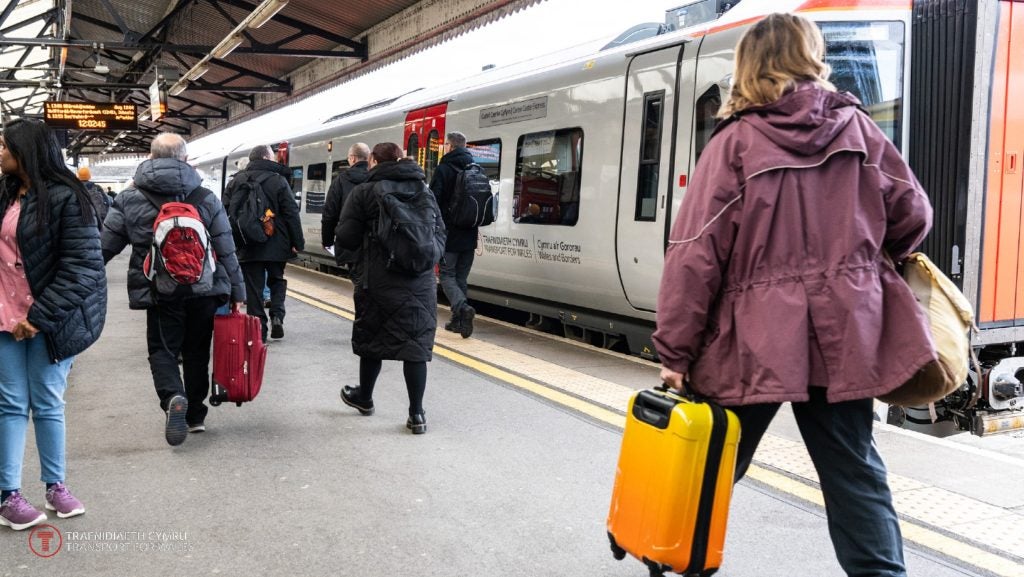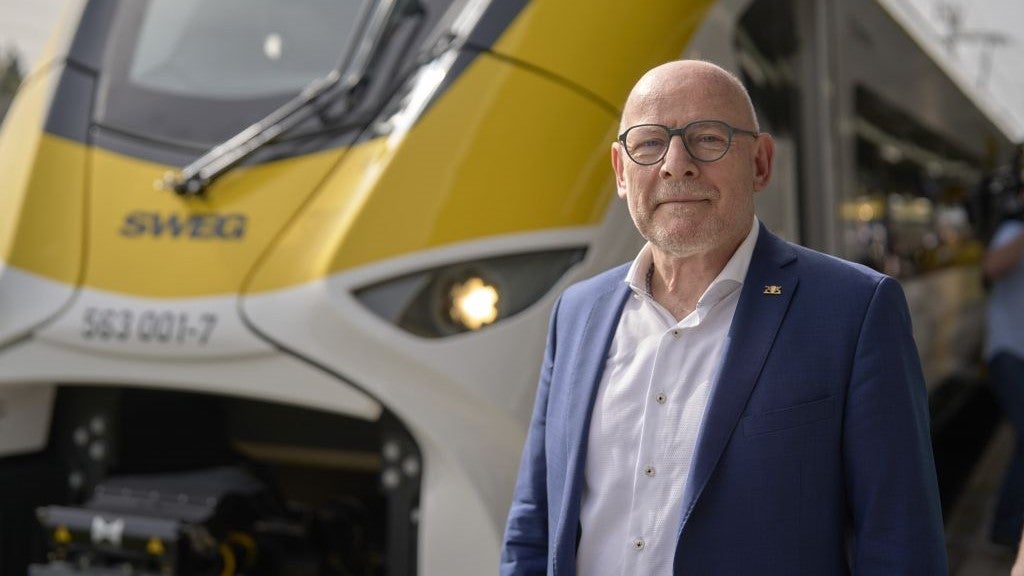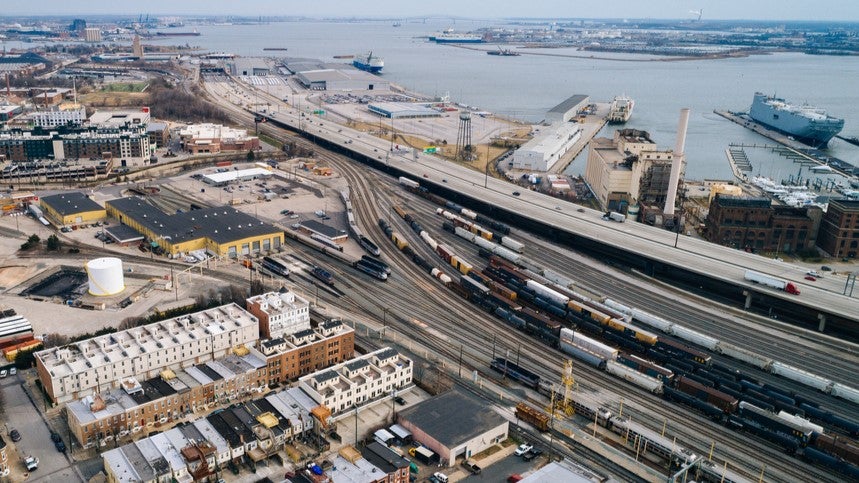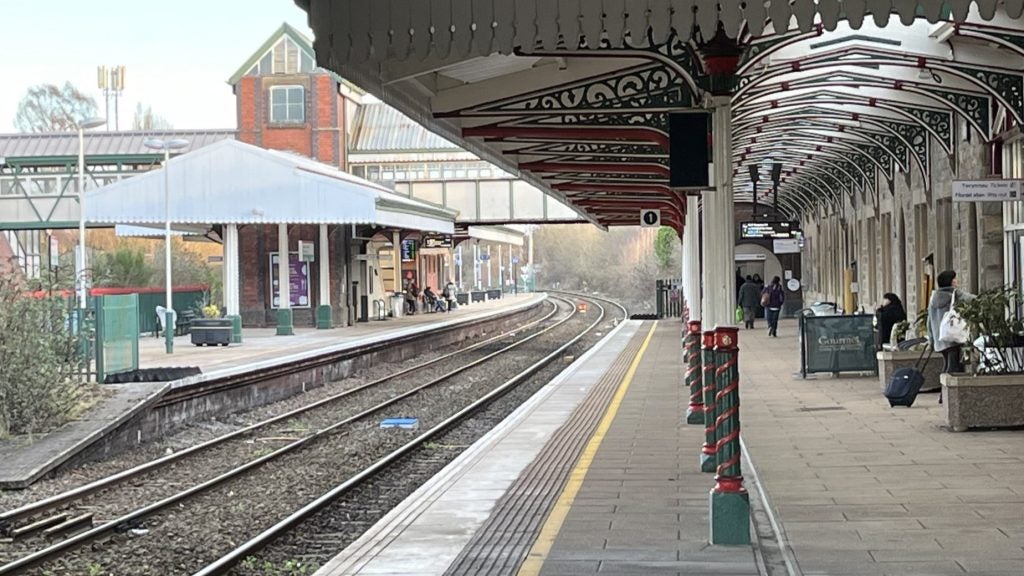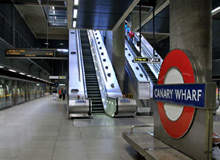
The view changes every day for passengers travelling on the East London Silverlink line, which passes through one of the city’s most altered landscapes – the site of the 2012 Olympics. From torn down old buildings to high stacks of rubbish, graded ground and felled trees, there is no mistaking the land around the tracks as being one in a state of flux. But it is not only the surroundings that are being made over, cosmetically and functionally for the Olympics.
Once it is complete, the 2012 London Olympics site will be the biggest infrastructure project ever carried out in Europe. With so many people to move during both the Olympics and Paralympics, rail will play just as important a part in the redevelopment of the site, and in surrounding services.
Just this month the new Japanese-style bullet train, which will carry passengers from east London to the Olympics site was unveiled in Kent by creator Hitachi. This is on the back of the famed Eurostar High Speed 1 project – now a model of a successful project managed on time, and on budget.
Tying the project in with already heavy passenger lines on all services will be a further challenge.
COMMITTING TO TRANSPORT
See Also:
London was awarded the 2012 Olympics (27 July–12 August and Paralympics 31 August–11 September) in July 2005. As has become the norm, a commitment to transportation by the host city formed a significant part of London’s winning bid. In keeping with growing environmental consciousness, the bid also had to embody efficient use of resources, regeneration and a long-term legacy from the developments.
How well do you really know your competitors?
Access the most comprehensive Company Profiles on the market, powered by GlobalData. Save hours of research. Gain competitive edge.

Thank you!
Your download email will arrive shortly
Not ready to buy yet? Download a free sample
We are confident about the unique quality of our Company Profiles. However, we want you to make the most beneficial decision for your business, so we offer a free sample that you can download by submitting the below form
By GlobalDataThe three concentrations of the 33 venues, 17 for the Paralympics, are designated the Central Zone (five West End locations), the River Zone (five eastern Thames-side locations) and Olympic Park at Stratford in east London, the largest of the zones that includes an 80,000-seat main stadium. Just as the venues are a mix of new and existing facilities, transport to support the 2012 Olympics will combine new infrastructure and vehicles with improvements to current resources.
Prior to the Games, mainly in summer 2011, venues will have test events that will assess the effectiveness of arrangements, including the transport operations.
THE OLYMPIC TRANSPORT PLAN
The Olympic Delivery Authority (ODA) has overall responsibility for the Games infrastructure, including the Olympic Transport Plan, published in draft form in 2006 and subject to progressive revisions. A venue transport plan for each location will also be devised.
The main operating bodies looking after rail for Olympic transport are Transport for London (TfL), Network Rail and the train operating companies (TOC) including London & Continental Railways (LCR). Underlying all arrangements is the requirement that the capital will remain able to function normally during the Games.
Much of the transport infrastructure needed to host the Games is already in existence or is planned to be in good time for 2012. As used by the ODA, ‘a public transport Games’ is both a statement of intent and also a recognition that road transport cannot meet the demands of such an event. Up to half a million spectators are expected daily at the games venues – a small proportion of which make up present traffic loads for London’s rail.
To help ease congestion on roads, public transport will be encouraged as much as possible. Parking at venues will be limited, so pedestrian and cycle routes will be created to help move people around London and between venues.
To ease the flow of passengers, spectator tickets for events will include public transport within London, excepting the BAA-owned Heathrow Express. Competitors and official Games employees will be issued with similar all-system tickets.
STRATFORD: A NEW OLYMPIC FEAT
Stratford has long been synonymous with rail operations. The London Underground Central Line, Docklands Light Railway (DLR), Great Eastern main line and North London Line (NLL) were all present in the area long before a role as an Olympic venue was conceived. From 1848 to 1991, Stratford was home to a locomotive works or depot, also the site of a large freight yard.
This wealth of rail connections and large areas of former railway land available for redevelopment made Stratford the ideal location for the Olympic Games site. It also meant it would not be likely to gain such concentrated investment by other means.
During the Games it is expected that Stratford will accept 240,000 passengers an hour with a train arriving every 15sec, and a promise has been made by a British transport minister to state that ‘London’s Olympic Park would be the most accessible in the history of the Games’.
It is not Stratford’s existing lines, however, that will bare the brunt of this influx in traffic. The station’s latest rail route, High Speed 1, is due to open in November 2007. It will carry passengers from the Channel Tunnel to London St Pancras and will facilitate the most high-profile access to Olympic Park.
STRATFORD INTERNATIONAL AND LINKS
Built in and over a concrete trench, Stratford International (opening date to be announced) will be served during the Games by a 29-strong fleet of Hitachi Class 395 ‘Javelin’ trains operating intensive services as 12-car sets from St Pancras in 7min (for central London) and Ebbsfleet International in 11min (for park and ride users from the nearby M2 and M25 motorways).
Termed by the Olympic Development Authority (ODA) as ‘the jewels in the crown’ of Olympic transport provision, the 140mph (225km/h) Javelins are due to enter fleet service on HS1 in late 2009.
However, Eurostar services from France and Belgium will not stop at Stratford during the Games. Passengers will instead need to transfer at Ebbsfleet or St Pancras.
As a result, Stratford International will also gain the area’s second DLR station as terminus to the line being created on the former North London line alignment from Canning Town via West Ham.
To be re-designated Stratford Regional, the established station just to the south of the Olympic Park has already undergone expansion and rebuilding (in the late 20th century) in connection with the Jubilee Line extension.
Now, with the Olympics, this high-volume transport hub will once again figure prominently.
In addition to main line services operated by the ‘one’ franchise that includes continental ferry connections via Harwich, there are frequent Central Line services, adjacent bus station and a new two-platform DLR terminus opened in 2007.
It is an irony that Crossrail, first projected in 1989 and with Stratford on the intended route, was not brought forward into Olympic transport plans, and its supporters do not now expect services to begin before 2015.
TRANSPORT FOR LONDON
It will be the infrastructure and vehicles of Transport for London (TfL) that will be the main carrier during the Games. As well as its rail-based operations, TfL is the authority for London buses and ‘black cab’ taxi operations and also regulator of the capital’s road network.
One of the largest metro operations in the world, TfL Underground (the tube) provides 1.8 million passenger journeys each working day. The 254 mile (408km) network covers much of the metropolitan area. The Central and Jubilee lines will be at the forefront of linking event venues, with the latter to have capacity increased by 45% in time for 2012 through re-signalling and new and lengthened trains.
TfL Underground was already subject to a substantial long-term upgrade following a policy change in 2003. The upgrade will continue in spite of infrastructure company Metronet entering administration in July 2007.
By 2012 TfL will have incorporated some routes of London’s internal heavy rail network. The new operating arm, Overground, designated in 2006 and scheduled for a £1.5bn investment, will include the Richmond–Stratford NLL and the Underground’s East London Line, which will close in its present form in December 2007 for upgrade and extension.
Relevant to the Olympics mainly for interchange with radial routes at many points, the lines will enjoy increased service frequency and be equipped with new Bombardier Class 378, similar to Class 376 already in service in south east London.
From a small-scale opening in 1987, the Docklands Light Railway is set for a key role in the Olympics which will bring an extra 500,000 extra daily journeys, representing three times the 2007 level of the entire system. Existing DLR connections between Olympic Park and the River Zone will be strengthened by a new line over the redeveloped NLL alignment from Canning Town to Stratford which will extend to Stratford International.
The extension to Woolwich Arsenal (near the Olympics shooting venue) of the DLR line serving the business-oriented London City Airport may open ahead of schedule in 2008. New and extended trains will contribute to an overall DLR system capacity increase of 50% between 2006 and 2009.
BEYOND CENTRAL LONDON
Venues such as Eton Dorney (where rowing will take place) and Broxbourne (the home of the canoe and whitewater events) are likely to attract day visitors from the main London area, with all having suburban rail links appropriate to the numbers envisaged. The most distant non-football venue from London, Weymouth/Portland (sailing), seems under an £18m improvement programme, set for road to provide the main access.
Dorset County Council states “Weymouth is well placed to receive visitors by rail” and intends to canvass the Department for Transport for improved frequencies and station improvements on the main line to London Waterloo and the regional route to Bristol.
Football really sows the Olympic seeds around the nation with Olympic fever being dished out to a lot of its regional cities. In addition to Wembley in north-west London, stadiums in Glasgow, Newcastle upon Tyne, Manchester, Birmingham and Cardiff will host games. All have mainline and local rail services.
The tennis tournament at Wimbledon is similar in that handling large visitor numbers is part of normal procedure. However, as Olympic competitions will probably have a higher proportion of non-UK residents, there is likely to be a greater reliance on public transport and information services for destinations and ground access.
Until then it will be the residents of London and its greater reaches that will get to test new transport systems in time for the games. Soon it will be more than just the landscape that will change on the Silverlink headed for Stratford. Platforms, signalling and services – everything is likely to be altered for the 2012 London Olympic Games.



